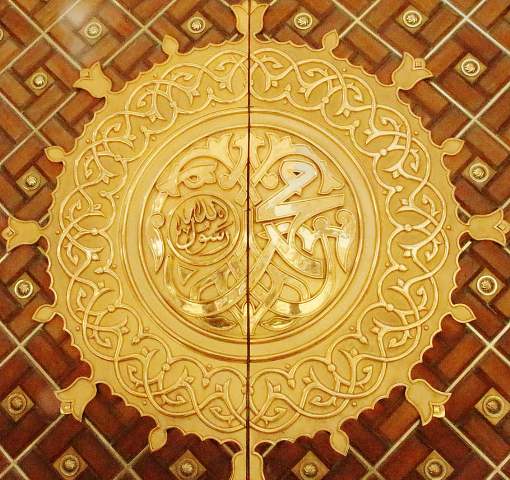The Night Journey and Ascension, known as Isra’ wal Mi’raj, stands as one of the most profound miracles in Islamic history. It is a story of divine honor, resilience, and hope—where Allah (SWT) elevated His beloved Messenger Muhammad (peace and blessings be upon him) both physically and spiritually, granting him an experience no other Prophet had received. This journey, marked by extraordinary events and deep symbolism, offers lessons of faith, perseverance, and the special status Allah (SWT) granted His Messenger (PBUH).
The Significance of Isra’ wal Mi’raj in Islamic Teachings
The event of Isra’ wal Mi’raj is commemorated every year on the 27th of Rajab, reminding Muslims of the miraculous journey that took place in a single night. It is referenced in the Qur’an and elaborated upon in authentic hadith, serving as a testament to the truth of the Prophet’s (PBUH) mission and the mercy of Allah (SWT).
“Exalted is He who took His Servant by night from al-Masjid al-Haram to al-Masjid al-Aqsa, whose surroundings We have blessed, to show him of Our signs. Indeed, He is the Hearing, the Seeing.”
(Qur’an 17:1)
This journey is not just a tale of the past—it is a living lesson in faith, trust, and the unique honor bestowed upon Prophet Muhammad (PBUH).
The Circumstances: Year of Sorrow and Divine Consolation
The context of Isra’ wal Mi’raj is crucial. The Prophet Muhammad (PBUH) had just endured the most difficult year of his life, known as ‘Am al-Huzn (the Year of Sorrow). He lost his beloved wife Khadijah (RA), his greatest supporter, and his uncle Abu Talib, his protector. Facing relentless opposition in Makkah and rejection in Ta’if—where he was even physically harmed—the Prophet (PBUH) was at his lowest point emotionally and socially.
In this moment of deep grief and apparent isolation, Allah (SWT) granted him the miraculous journey, as a sign of divine support, love, and honor.
The Journey Begins: From Makkah to Jerusalem (Isra’)
The journey began while the Prophet (PBUH) was resting in the house of Umm Hani (RA) in Makkah. The roof opened, and Angel Jibril (AS) descended. According to authentic narrations (Bukhari, Muslim), Jibril (AS) opened the Prophet’s (PBUH) chest, washed his heart with Zamzam water, and filled it with wisdom and faith.
Jibril (AS) then brought a magnificent, white creature called Buraq—swifter than lightning. The Prophet (PBUH) mounted Buraq, and together with Jibril (AS), they set out on a journey that would ordinarily take months, but was completed in moments by Allah’s will.
Along the way, Jibril (AS) instructed the Prophet (PBUH) to stop and pray at several significant locations:
- Madinah: The future city of his migration.
- Mount Sinai: Where Musa (AS) received revelation.
- Bethlehem: The birthplace of Isa (AS).
- The grave of Musa (AS): Near the holy land.
Each stop symbolized the continuity of prophethood and the unity of the divine message.
Arrival at Masjid al-Aqsa: The Gathering of Prophets
Upon reaching Masjid al-Aqsa in Jerusalem, the Prophet (PBUH) was greeted by a gathering of all the previous prophets—Adam, Ibrahim, Musa, Isa, and others (peace be upon them all). In a moment of immense honor, he was asked to lead them in prayer, signifying his elevated status as the Seal of the Prophets and the leader of all messengers.
This act established the spiritual connection between the three holiest sites in Islam—Makkah, Jerusalem, and Madinah—and affirmed the finality and universality of the Prophet’s (PBUH) message.
The Ascension (Mi’raj): From Earth to the Heavens
After the prayer, the Prophet (PBUH) was taken by Jibril (AS) on the Mi’raj—a miraculous ascension through the seven heavens. At each level, he met and exchanged greetings with the prophets who had come before him:
- First Heaven: Adam (AS)
- Second Heaven: Isa (AS) and Yahya (AS)
- Third Heaven: Yusuf (AS)
- Fourth Heaven: Idris (AS)
- Fifth Heaven: Harun (AS)
- Sixth Heaven: Musa (AS)
- Seventh Heaven: Ibrahim (AS)
Each prophet welcomed him and acknowledged his prophethood, reinforcing the brotherhood and continuity of Allah’s messengers.
The Highest Honor: Sidrat al-Muntaha and Divine Presence
The journey continued until the Prophet (PBUH) reached Sidrat al-Muntaha—the Lote Tree of the Utmost Boundary, beyond which no creation may pass. Here, Jibril (AS) stopped, explaining that no one, not even an archangel, could proceed further. Only the Prophet Muhammad (PBUH) was honored to advance into the Divine Presence.
“And he certainly saw him in another descent, at the Lote Tree of the Utmost Boundary—near it is the Garden of Refuge—when there covered the Lote Tree that which covered [it]. The sight [of the Prophet] did not swerve, nor did it transgress [its limit]. He certainly saw of the greatest signs of his Lord.”
(Qur’an 53:13-18)
Unlike Musa (AS), who was commanded to remove his sandals at the sacred valley (Qur’an 20:12), the Prophet Muhammad (PBUH) was not asked to remove his footwear, symbolizing a higher degree of honor and intimacy in the Divine Presence.
The Gift of Salah: Mercy for the Ummah
In this sacred encounter, Allah (SWT) initially ordained fifty daily prayers for the Muslim community. As the Prophet (PBUH) descended, he met Musa (AS), who advised him to request a reduction, knowing the difficulty his followers would face. The Prophet (PBUH) repeatedly returned to Allah (SWT), and through His mercy, the prayers were reduced to five, with the reward remaining as fifty.
This exchange highlights the compassion of Allah (SWT), the concern of Musa (AS) for the Ummah, and the unique status of the Prophet Muhammad (PBUH) as the intercessor and leader.
Sights of the Unseen: Paradise, Hell, and Divine Signs
During Mi’raj, the Prophet (PBUH) was shown the wonders of Paradise and the torments of Hell. He witnessed the rewards for the righteous and the punishments for those who disobeyed Allah (SWT), providing vivid lessons for his followers.
He also saw the carriers of the Throne, the angels, and many other signs, all affirming the reality of the Hereafter and the truth of his message.
The Return to Makkah: A Test of Faith
The Prophet (PBUH) was returned to Makkah before dawn, his bed still warm. Upon sharing his experience with the Quraish, many mocked him, seeing the journey as impossible. Yet, his closest companion, Abu Bakr (RA), affirmed his truthfulness, earning the title As-Siddiq (the Truthful).
The journey became a test of faith for the early Muslims, separating the sincere believers from the doubters.
The Prophet’s (PBUH) Morale and the Ummah’s Hope
Isra’ wal Mi’raj was a turning point for the Prophet (PBUH). From the depths of sorrow, he was elevated to the highest spiritual station. The journey renewed his strength, deepened his resolve, and filled him with hope. He returned to his mission with greater confidence, knowing Allah’s support was with him.
Unique Honors Bestowed Upon the Prophet (PBUH)
- No command to remove his footwear in the Divine Presence: Unlike Musa (AS), a sign of higher honor.
- Leading all prophets in prayer: Affirming his status as the leader of all messengers.
- Ascending beyond the reach of even Jibril (AS): An unparalleled closeness to Allah (SWT).
- Receiving the gift of Salah directly from Allah (SWT): The only commandment given in the heavens, not on earth.
Frequently Asked Questions
Why did Allah (SWT) choose this moment for the journey?
To console and honor the Prophet (PBUH) after immense personal loss and hardship, reaffirming his mission and status.
What unique honors did the Prophet (PBUH) receive?
He led all prophets in prayer, ascended beyond Jibril (AS), was not asked to remove his footwear, and received Salah directly from Allah (SWT).
How does the journey compare to Musa (AS)?
While Musa (AS) was commanded to remove his sandals at the sacred valley, the Prophet Muhammad (PBUH) was granted a higher intimacy and honor in the Divine Presence.
What did the Prophet (PBUH) witness?
He saw the heavens, met previous prophets, witnessed Paradise and Hell, and saw many signs of Allah’s power and mercy.
How can we apply these lessons today?
By valuing Salah, trusting Allah (SWT) in adversity, and seeking hope and resilience from the example of the Prophet (PBUH).
Contemporary Relevance: Living the Lessons of Isra’ wal Mi’raj
In a world filled with challenges, doubts, and distractions, the journey of Isra’ wal Mi’raj reminds us of the power of faith and the nearness of Allah (SWT). The five daily prayers, established during this journey, offer every Muslim a chance to ascend spiritually, connect with the Divine, and find peace amidst chaos.
The story urges us to honor the Prophet (PBUH), cherish the unity of all prophets, and hold fast to our faith—even when faced with skepticism or hardship.
Conclusion: A Call to Ascend
Isra’ wal Mi’raj is more than a miraculous journey—it is a call for every believer to rise above despair, to seek closeness to Allah (SWT), and to honor the legacy of the Prophet Muhammad (PBUH). As we reflect on this event, let us renew our commitment to Salah, deepen our faith, and strive to embody the resilience and hope that defined the Messenger (PBUH).
“Indeed, in the Messenger of Allah you have an excellent example for whoever has hope in Allah and the Last Day and remembers Allah often.”
(Qur’an 33:21)
May Allah (SWT) grant us the strength to follow the Prophet’s (PBUH) example, to ascend spiritually through our prayers, and to find hope in every trial. Let the story of Isra’ wal Mi’raj inspire us to honor the Messenger (PBUH) and seek the nearness of our Lord, today and always.






